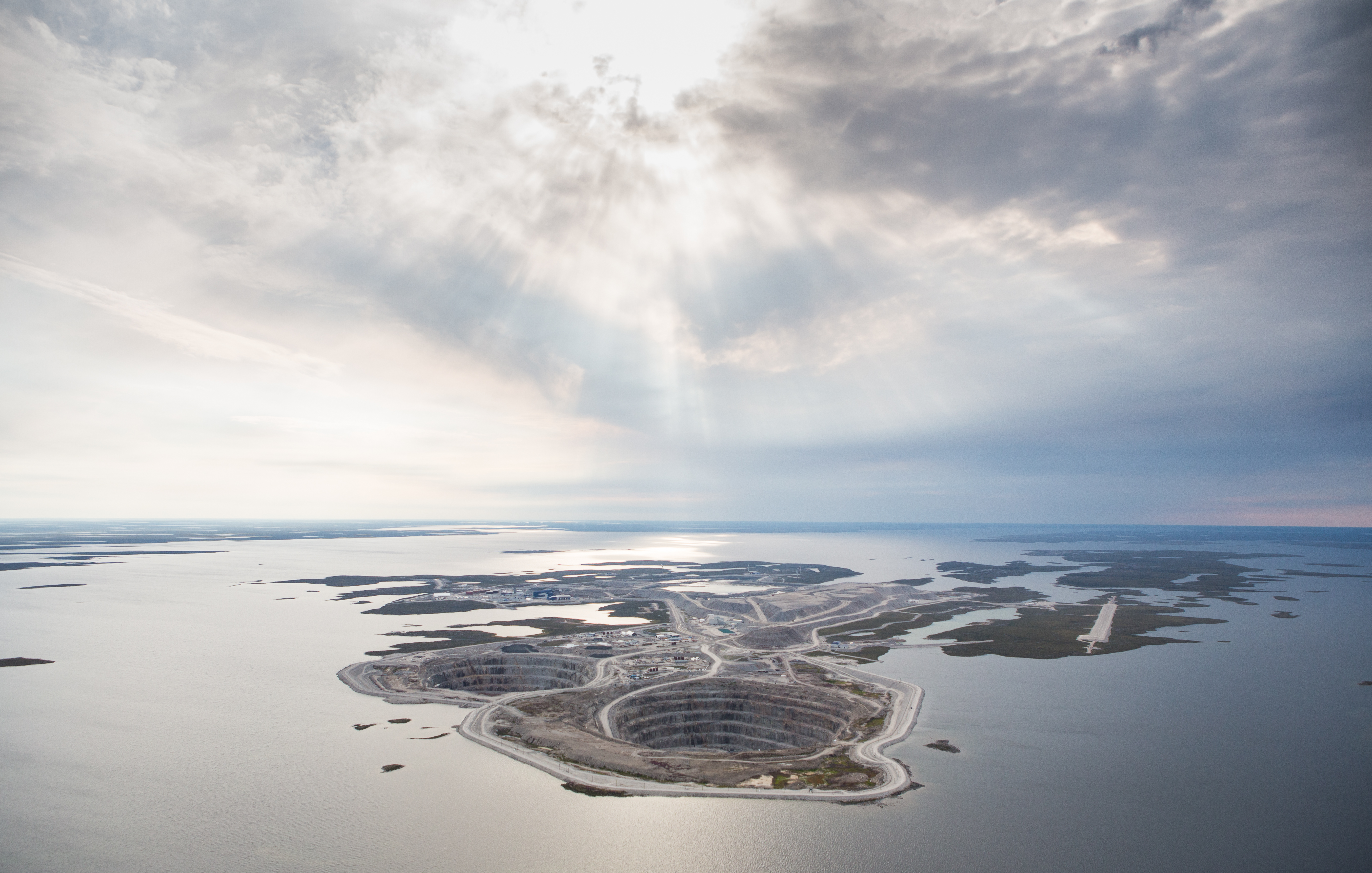Today we had the pleasure of hearing Dr. Richard Amos describe his research on managing groundwater contaminants in the resource development industry for our first ever Global Water Institute “Water Conversations” event.

Dr. Richard Amos presents his research on October 26th, 2017. Photo credit: Muhammad Salam.
Dr. Amos is a professor of Earth and Environmental Sciences at Carleton University. He and his students investigate the biogeochemical reactions and transport processes that affect groundwater quality in and around mining and industrial sites, with the goal of improving waste management strategies and remediating contaminated sites. Dr. Amos’ presentation was centered on research aimed at measuring, predicting and mitigating contamination by Acid Rock Drainage (ARD) in collaboration with Diavik Diamond Mine, the University of Waterloo, the University of Alberta and the University of British Columbia.

Diavik diamond mine, in the centre of Lac de Gras, Northwest Territories. Copyright © 2017 Rio Tinto.
Acid Rock Drainage (ARD) refers to the process by which acidity is created and metals are released when sulphide minerals are exposed to air and water and oxidization takes place. ARD contamination released to surrounding environments can be harmful to aquatic life.
While ARD is also a naturally-occurring phenomenon, it is a major concern at operating mine sites and after mine closure. Open-pit and underground mining can create large volumes of waste rock that must be moved to access the ore. This breaking up and moving aside of waste rock exposes the rock to oxygen, increasing the potential for oxidation and the production of acid.
One of the main concerns for the mining industry today is containing the potential for contamination, to minimize the environmental impact of the mine during operation and ensure that the site can be reclaimed after closure. Today, the industry is strictly regulated and there is greater public awareness and scientific understanding of the consequences. Currently operating mines are required to deal with their waste much more rigorously, and demonstrate to regulatory agencies and the public that they have a plan to close and rehabilitate the site. This “closure planning” is the focus of the research discussed by Dr. Amos.
The research team used a series of experiments ranging from small scale laboratory test, medium scale field experiments and measurements on large scale operational waste-rock piles to understand how measurements taken at small scales can be effectively interpreted to predict water quality from large-scale waste-rock piles. The data obtained by Dr. Amos and his team using these methods helped develop a waste containment and closure plan for the Diavik diamond mine that improved community and regulator confidence in the environmental viability of the project into the future. The methods applied here could help develop better waste containment strategies for a variety of mining and industrial sites that are subject to similar environmental concerns.
Dr. Amos’ presentation was followed by a refreshingly multidisciplinary question period, where students and faculty alike enquired about technical logistics, biological impacts, national vs. foreign regulatory differences, and the process through which such a research accord is struck with a mining company. We invite you to attend the next installment of the GWI’s Water Conversations series for the opportunity to ask the experts your most pressing questions about the water issues facing the world today.
Follow the link below to see Dr. Amos’ PowerPoint presentation. Some of the data slides have been removed since the papers are not published yet, but interested parties can contact Dr. Amos for more information at richard.amos@carleton.ca.
Managing groundwater contaminants in the resource development industry – PowerPoint
Article by Christiane Mineau.